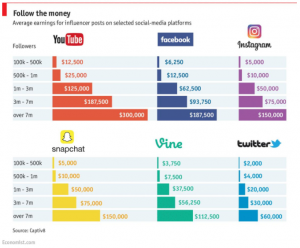Technology is undoubtedly the future of supply chain management, especially for retail. Retailers have already made huge strides in recent years to automate various parts of the supply chain, and that innovation is expected to continue. Here are six of the top technologies that are influencing modern supply chain management:
Contact tracing. In its most basic form, contact tracing refers to identifying anyone who may have come into contact with someone who has an infectious disease. This type of technology is well-needed in supply chain nodes like distribution centers, warehouses, and stores, especially given the ongoing COVID-19 pandemic. Supply chain managers are quickly learning the value of contact-tracing technology solutions, which can be installed on mobile devices. Just a simple click can show a manager exactly where an infected person has most recently been and who he or she has been around. With this precise information, the employer can ask specific shifts to quarantine, rather than quarantine a facility’s full staff when a worker is found positive for carrying COVID-19 or another infectious disease. The solution can also issue real-time alerts to social distancing violations on the production line (especially those where workers are used to standing close together, like meatpacking) or elsewhere throughout the supply chain.
Blockchain. The future of supply chain execution is being revolutionized by blockchain, which will enable a much higher level of transparency between manufacturer and consumer. For example, when shoppers select items from a shelf, say a package of blueberries, they will be able to see every transaction across the product’s lifecycle using scanners that recognize the product’s biometrics. Customers will be able to see that the blueberries were grown without using pesticides in April 2020 on a farm in California, packaged in a plant in Pennsylvania, then transported to a grocery store in Massachusetts – all while maintaining optimum temperatures. This increased transparency will allow customers to make more informed choices on the quality of products they buy, giving them insight into sustainability details, and will also open a host of issues for supply chain management professionals to address.
In the CPG industry, this newfound transparency for consumers will require retailers to adapt the way they sell items. If a truck does not maintain optimum temperatures during transport, grocers may find it more difficult to sell the produce from that shipment, as opposed to produce that was kept much fresher. Retailers who don’t minimize the carbon emissions of their manufacturing processes will lose interest from consumers who demand sustainability. These insights into sustainable and fresh practices powered by blockchain will keep brands alerted across their supply chains, as consumers will see what materials and processes, they are truly using. Incorporating a prescriptive analytics solution throughout supply chain operations can give retailers and manufacturers insights into the behaviors of their end consumers and provide actionable direction to better align processes with consumer preferences. For the first time, shoppers will be able to see if the product in their hands lives up to the claims made on its label.
Control towers. In addition to the use of blockchain, supply chain executives will need to rethink their relationship to control towers. A control tower provides tools for a supply chain organization to monitor and manage its resources, from manufacturing, to shipping (ocean freight, land and others) and receiving docks, to the warehouse, with full clarity over its inventory. Think of it as an umbrella term for the solutions that companies find most important. Some organizations might place more emphasis on tracking inbound and outbound shipments while others prioritize combined data from multiple ERP systems. Rather than tossing data in a warehouse and painstakingly reporting on it, retailers can use prescriptive analytics in conjunction with the control towers to track down pallets by their SKU/UPC. Then they can identify a specific transaction and all the surrounding details, find issues with machinery, transportation or logistics, personnel training, or slotting and prescribe appropriate actions with ease.
Augmented intelligence. We are already living in a world of AI and augmented intelligence. If you combine AI and human brainpower — you’ve got augmented intelligence. If you combine that same brain power with robots — you’ve got cobots or collaborative robots. Cobots give supply chain professionals access to all the benefits of advanced robotic automation, without the difficult, time-consuming refactoring warehouses, long-time programming and high expenses. The future of the supply chain will also see rise to the idea of cobots – robots working with humans to efficiently and effectively take on tasks like inventory management, tracking, and planning. Imagine walking down the aisle of your favorite store and interacting with a roaming robot to learn more information about the products on the shelf. Imagine robots on the floor of an inventory warehouse directing pallets to their proper place. Cobots are becoming a valuable asset of the industry across the supply chain, at warehouses and in retail stores.
Digital imaging solutions. Cameras are everywhere these days, so it should come as no surprise that digital imaging is taking quality assurance and inventory management to the next level. Cameras will be able to identify products, then convert the image into numbers and analyze those details using prescriptive analytics into smart actions in real-time. The images will show the quality of the product, the way the customer interacted with it and identify how well the product is made, revolutionizing the process for quality assurance professionals within the supply chain. This digital imaging technology will also have a great impact on facial recognition capabilities and automation. This is similar to Amazon Go’s model, which allows customers to pick up items and exit the store, identifying their details, including payment through facial recognition, powered by digital and video imaging.
AI and machine learning for DC optimization. The DC is a complex place. The vast array of moving parts, processes, people, and technology operating at any given time makes it difficult to identify and execute necessary improvements in this crucial element of the supply chain. Numerous DCs are leveraging AI- and machine learning-powered analytics solutions to help cut through the complexity and advise them exactly where and how to drive operational excellence. The right solution should consider all the slotting, invoices, bills of labor, time between picks, accuracy rates, and HR information to maximize on-time shipment complete, efficiency, and effectiveness throughout the warehouse.
The above are just six examples of technology that are increasingly leveraged within the supply chain. Retailers and others who choose to adopt them will be in a significantly better position to maintain their competitive edge in the future.
Business & Finance Articles on Business 2 Community
(34)
Report Post





